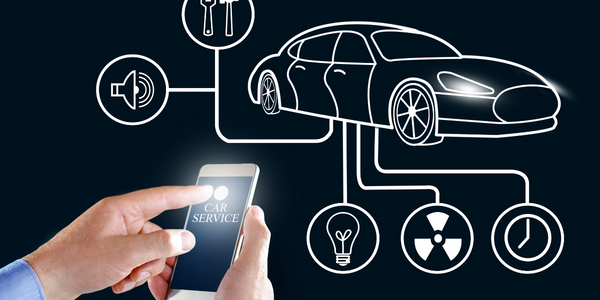下载PDF
Western European Organization Realizes DDoS Attack Complexity Dictates Hybrid Protection
技术
- 网络安全和隐私 - 云安全
- 网络安全和隐私 - 网络安全
用例
- 网络安全
服务
- 网络安全服务
挑战
这家西欧组织为保险、政府和金融机构提供网络基础设施咨询服务,其业务正在加速增长,银行客户监管也越来越严格。这让他们意识到需要立即升级 DDoS 防护。尽管该组织拥有始终在线的云 DDoS 防护解决方案,但仍遇到一些似乎绕过云解决方案的 DDoS 活动。该组织最初倾向于始终在线的云解决方案,但 NETSCOUT 团队向他们提供了 Omnis Threat Horizon Kiosk 的报告,报告显示,他们的数据中心遭受了多次攻击,这些攻击经常绕过始终在线的云解决方案。
关于客户
该客户是一家西欧组织,为该地区的保险、政府和金融机构提供网络基础设施咨询服务。他们还通过两家本地服务提供商为部分客户网络提供托管服务。最初,他们是一家小公司,但目前正处于加速增长的道路上。他们有两个数据中心托管客户网络,但只有一个数据中心具有 DDoS 保护功能,并且采用始终在线的云实施形式。尽管如此,他们仍然发现一些似乎可以通过云解决方案解决的 DDoS 活动。
解决方案
NETSCOUT 团队向高管团队提出了一种混合解决方案。本地 Arbor Edge Defense (AED) 将处理他们已经遇到的攻击,这些攻击通常会通过始终在线的云解决方案进行处理,而 Arbor Cloud 解决方案将处理在进入网络之前压倒互联网电路的攻击。从技术上讲,该解决方案满足了他们的所有目标。他们购买了两台 AED 来覆盖他们的数据中心,并最终将根据其与 AED 的紧密集成购买 Arbor Cloud 的访问权限。他们已经在寻求 Cyber Investigator 来增强他们的安全态势。
运营影响
相关案例.

Case Study
Enel Secures Italian Power Generation Network
Electric energy operators around the world are working to increase the reliability and cyber resiliency of their systems. This includes Enel, a global power company that manages and monitors the Italian power grid. This grid:• Serves 31 million customers• Has a net installed energy capacity exceeding 31 gigawatts• Includes more than 500 power generation plants,including hydroelectric, thermoelectric, and wind• Is managed and monitored by Enel 24/7/365• Is operated by Terna, the Italian Transmission System Operator (TSO)Enel is responsible for the availability of the grid’s underlying ICS and industrial network. It also manages Regional Control Centers and Interconnection Centers which connect with the TSO. The TSO manages the flow of energy to the grid plus controls and remotely regulates the power generation of power plants, increasing and decreasing power production as required. The complex system of interaction and cooperation between Enel and the TSO has strong security implications as well as operational and business challenges.

Case Study
Securing the Connected Car Ecosystem
In-vehicle communications and entertainment system hosts high-value or sensitive applications. API libraries facilitate communication and sharing of vehicle data. These API libraries are vulnerable to reverse engineering and tampering attacks and may even result in loss of passenger safety. Attackers can inject malware that may be able to migrate to other in-car networks such as the controller-area-network (CAN) bus which links to the vehicle’s critical systems. Software provided for dealers to interface with cars through the OBD2 port is vulnerable to reverse engineering and tampering attacks. Hackers may be able to abuse these tools to inject malicious code into the ECUs and CAN bus. Attackers can lift the cryptographic keys used, and use that to build their own rogue apps/software. Their cloned version of the original app/software may have altered functionality, and may intend to gain access to other in-car networks.

Case Study
Secure and Cloud-based Data Marketplace
The great promise of new connected concepts of industry like 'Industry 4.0' is their ability to deliver a historically unparalleled level of responsiveness and flexibility. While modern supply chains are already heavily integrated and designed to be fluid and fast moving, a large swathe of manufacturing still remains beholden to economies of scale, large production runs, and careful preplanning.The Industrial Internet of Things (IIoT) is set to change this by allowing small-batch or even custom manufacturing on a truly industrial scale. With machines whose functions are not set in stone, but flexible and determined by their operating software and with a new form of connectivity bringing industrial engineers, product manufacturers, and end users closer together than ever before. Ad-hoc adjustments to automotive parts, for example, during active product runs or the bespoke manufacturing of custom sneakers become very viable options indeed.Much of this remains a theoretical vision, but IUNO, the German national reference project for IT security in Industry 4.0 demonstrates the new capabilities in action with a secure technology data marketplace running a smart drinks mixer.

Case Study
Expedia Hosted by 2lemetry Through AWS
Expedia is committed to continuous innovation, technology, and platform improvements to create a great experience for its customers. The Expedia Worldwide Engineering (EWE) organization supports all websites under the Expedia brand. Expedia began using Amazon Web Services (AWS) in 2010 to launch Expedia Suggest Service (ESS), a typeahead suggestion service that helps customers enter travel, search, and location information correctly. According to the company’s metrics, an error page is the main reason for site abandonment. Expedia wanted global users to find what they were looking for quickly and without errors. At the time, Expedia operated all its services from data centers in Chandler, AZ. The engineering team realized that they had to run ESS in locations physically close to customers to enable a quick and responsive service with minimal network latency.
.png)
Case Study
OTA Software Updates for Smart Energy (gridX)
gridX has a requirement for over-the-air software updates for their gridBox devices and used the Yocto Project for their builds. The driver for the requirement was having the ability to quickly support new features, as well as deploying bug fixed and path known security vulnerabilities. New software updates with a US stick manually to all gridBox devices in the field would be prohibitively expensive and labor-intensive.

Case Study
Transformed IT Infrastructure Improves Business Agility
A global security, storage, and systems management software provider planned to demerge into two separate companies. To prepare, it undertook a major overhaul of its IT infrastructure and operations strategy. A key requirement: streamlining the Hosting Group, which handled compute, storage, and middleware operations. These functions had grown complex and had a wide geographic distribution. The company planned to bring them under closer in-house management.The company looked to increase its business agility so it could quickly and creatively respond to customer demands with improved internal collaboration and optimized go-to- market and IT service delivery capabilities. Modernizing IT functions, and making them more responsive, was critical to achieving these goals.





